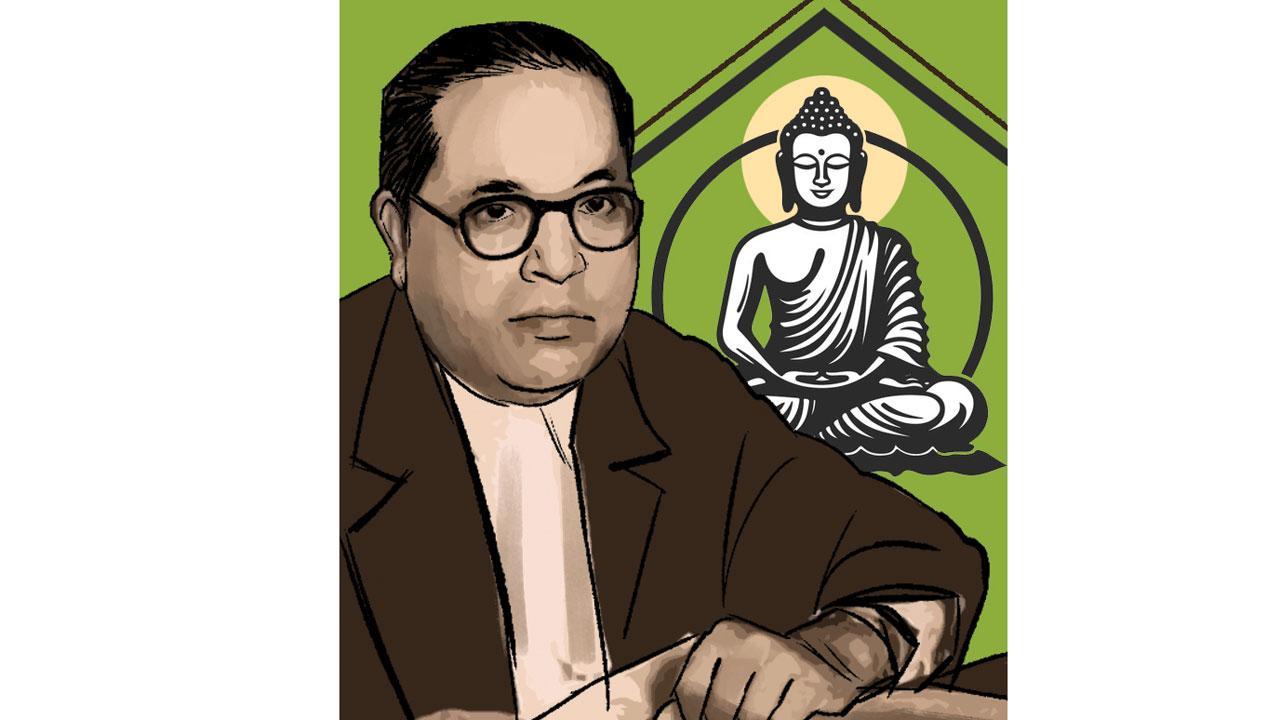Visiting Babasaheb’s home
Updated On: 18 August, 2024 08:13 AM IST | Mumbai | Meenakshi Shedde
Soon after, accompanied by Somnath Waghmare, I visited Babasaheb’s former home at Rajgruha, Hindu Colony, Dadar East

Illustration/Uday Mohite
![]() When you’re visiting a place for just a few days, you usually end up seeing interesting places that the locals have never gotten around to seeing. That’s how it was, that last year, when visiting New York, I went to Columbia University on a pilgrimage, to pay my respects at the famous bust of Dr Babasaheb Ambedkar. I have been researching for a project on caste since eight years; and still feeling a bit directionless, I beseech him for a sign. Then it hit me like a thunderbolt: it felt as if, impatient at my dithering, he was asking me, when are we going to see it? I was very overwhelmed and burst into tears, and relieved I was on the right track. Much later, I laughed heartily at this fully filmy scene, like Amitabh Bachchan’s monologuebaazi in Deewaar, beseeching a statue of Lord Shiva in the temple for his mother’s life, cut to his Maa, Nirupa Roy, coming to life in the hospital. It was profound and ridiculous at the same time.
When you’re visiting a place for just a few days, you usually end up seeing interesting places that the locals have never gotten around to seeing. That’s how it was, that last year, when visiting New York, I went to Columbia University on a pilgrimage, to pay my respects at the famous bust of Dr Babasaheb Ambedkar. I have been researching for a project on caste since eight years; and still feeling a bit directionless, I beseech him for a sign. Then it hit me like a thunderbolt: it felt as if, impatient at my dithering, he was asking me, when are we going to see it? I was very overwhelmed and burst into tears, and relieved I was on the right track. Much later, I laughed heartily at this fully filmy scene, like Amitabh Bachchan’s monologuebaazi in Deewaar, beseeching a statue of Lord Shiva in the temple for his mother’s life, cut to his Maa, Nirupa Roy, coming to life in the hospital. It was profound and ridiculous at the same time.
Soon after, accompanied by Somnath Waghmare, I visited Babasaheb’s former home at Rajgruha, Hindu Colony, Dadar East. I was mortified by the rather modest approach in honouring the home of such a great leader as Dr Babasaheb Ambedkar, chief architect of the Constitution of India, economist, revolutionary social reformer, historian, politician, jurist, anthropologist and more. There were four-five modest rooms, with his ashes in an urn, shabbily preserved faded photographs, a bed, a marble bathtub, a few vessels and pathetic documentation and display. Later, I had the privilege of paying my respects in the inner sanctum at Chaityabhoomi, Babasaheb’s memorial, where he was cremated in 1956, at Dadar Chowpatty, Mumbai, near midnight of December 6th last year. It is the date of his death, commemorated as his ‘mahaparinirvan divas’, and I spent time in the prayer hall, along with his immediate family and friends, with Buddhist monks in orange robes chanting prayers, as lakhs of his followers/devotees queued up in the streets outside, many having come from faraway places all over India and beyond.




